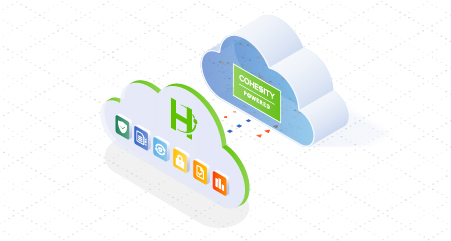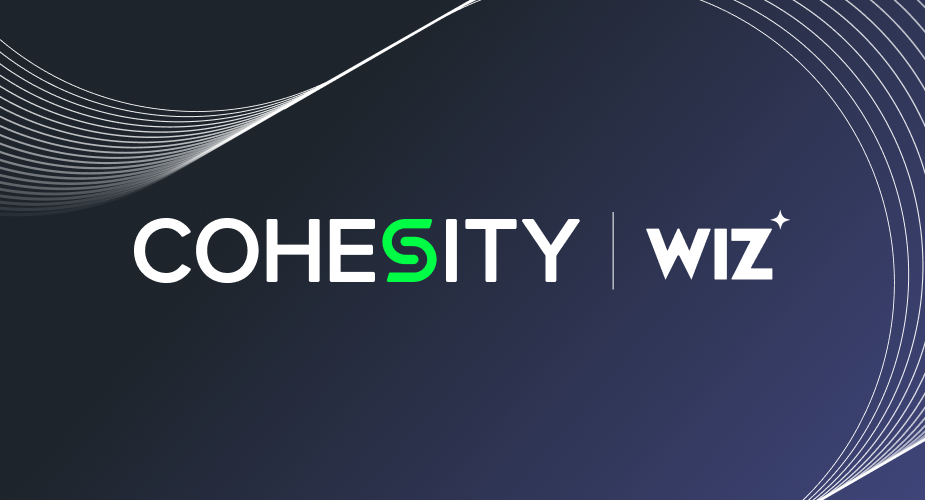The meteoric rise of public cloud has changed the game — and created many new opportunities for service providers (SPs). SPs are now looked at by many enterprises as ‘multi-cloud partners’, their role evolving from hosting and IaaS to turnkey service-delivery across sites and clouds.
While SPs have capitalized well on new-age compute and application services powered by public cloud, a large gap still exists in the space of data management. Enterprises are looking for turnkey solutions and services to help them rein in data chaos across clouds.
The Public Cloud Is Impacting the Service Provider Market
The SP market is growing fast — valued at $325 billion — with a compound annual growth rate (CAGR) of 11.5%. Together, these SPs serve over 500,000 customers, with more than 50 million VMs under management. However, the landscape of this lucrative market is changing. What used to be an asset-first and datacenter-ownership business, is quickly turning asset-light with 85% of SPs using public cloud infrastructure in some capacity.
Asset-light SPs, who have little to no physical assets, are emerging as market disruptors, as evidenced by the Gartner Magic Quadrant for Public Cloud Infrastructure Professional and Managed Service Providers. However, this group is not without its challenges too. A pure asset-light model leaves significant revenue opportunities on the table — especially from large, traditionally on-prem customers with a cloud mandate that need help with their first cloud use cases — backup, DR, archival.
From talking to our customers and partners, we have seen that the most successful SPs are ones that offer a hybrid portfolio of offerings to their customers: turnkey managed services that stretch across public cloud, customer-prem, and edge. And central to these offerings is data management.
What Is Cohesity DMaaS and What Does it Mean for SPs?
No matter where SPs sit in the infrastructure spectrum, data management is a relevant opportunity. Those that are infrastructure-first need to build out a clear roadmap for addressing multi-cloud/hybrid cloud data management. And those that are cloud native need to build out prem-inclusive service portfolios.
We believe that Cohesity DMaaS will fill the hybrid cloud data management gap for service providers as it transitions to a new phase.
Cohesity DMaaS addresses the growing need for data management that is flexible, available, scalable, and reliable. It is designed to provide customers with a radically simple way to back up, secure, govern, and analyze their data, with a unique multi-cloud platform that spans from prem, to edge, to public cloud. Cohesity DMaaS is a simple SaaS offering, and when used in conjunction with Cohesity’s data center offerings, allows SPs to form a unique hybrid cloud data plane that can help their customers protect, secure, and consolidate all of their data.
In particular, Cohesity DMaaS offers SPs the ability to augment their Cohesity-powered data management services with a managed public cloud offering. This combination will help SPs offer data protection, file and object services, data archiving and much more, across customer-premises, service provider data centers, co-located racks, edge locations, and public cloud, all on a single unified platform.
How Do Service Providers Benefit from Cohesity DMaaS?
DMaaS offers SPs the following benefits:
- Expanded service portfolio: With Cohesity DMaaS, you can add novel and nimble cloud data management services to your portfolio. Cohesity’s partner-first approach provides an easy on-ramp to adding managed SaaS to your portfolio.
- New direct-to-cloud use cases: In addition to hosted backup and remote backup, you can add cloud backup to your service arsenal. You can offer customers an unparalleled ubiquitous data plane that protects their workloads on any cloud. You also provide differentiated managed services and wraparound cloud services for increased profitability.
- Expanded reach and availability: Cohesity DMaaS enables you to expand your data management footprint to cover geographies where you do not own infrastructure, thereby driving nimble expansion to new markets and customers without any physical procurement, CapEx investments, or both.
In addition, with Cohesity DMaaS, you receive continuous updates to add functionality and feature enhancements and to address any issues. More workloads supported for backup and several other service enhancements are already planned.
The Cohesity Commitment to SPs
Cohesity is 100% partner-focused, with a rapidly growing SP business. And regardless of a service provider’s specialty, Cohesity meets them where they are in their journey to multi-cloud service delivery. Cohesity already enables service providers to offer seamless hybrid cloud data management services, including data protection, file and object services, data archiving and much more, all on a single unified platform, through the partner program for service providers.
With Cohesity DMaaS, SPs gain flexibility and a choice of deployment models to offer their customers in a market that is being disrupted by the public cloud. SPs can build out their portfolios, move to or improve their hybrid or multi-cloud model, and generate new revenue streams that increase profitability.
Want to Learn More?
You can get more details on Cohesity DMaaS from our announcement, and check out our SP solutions on our service provider page.















